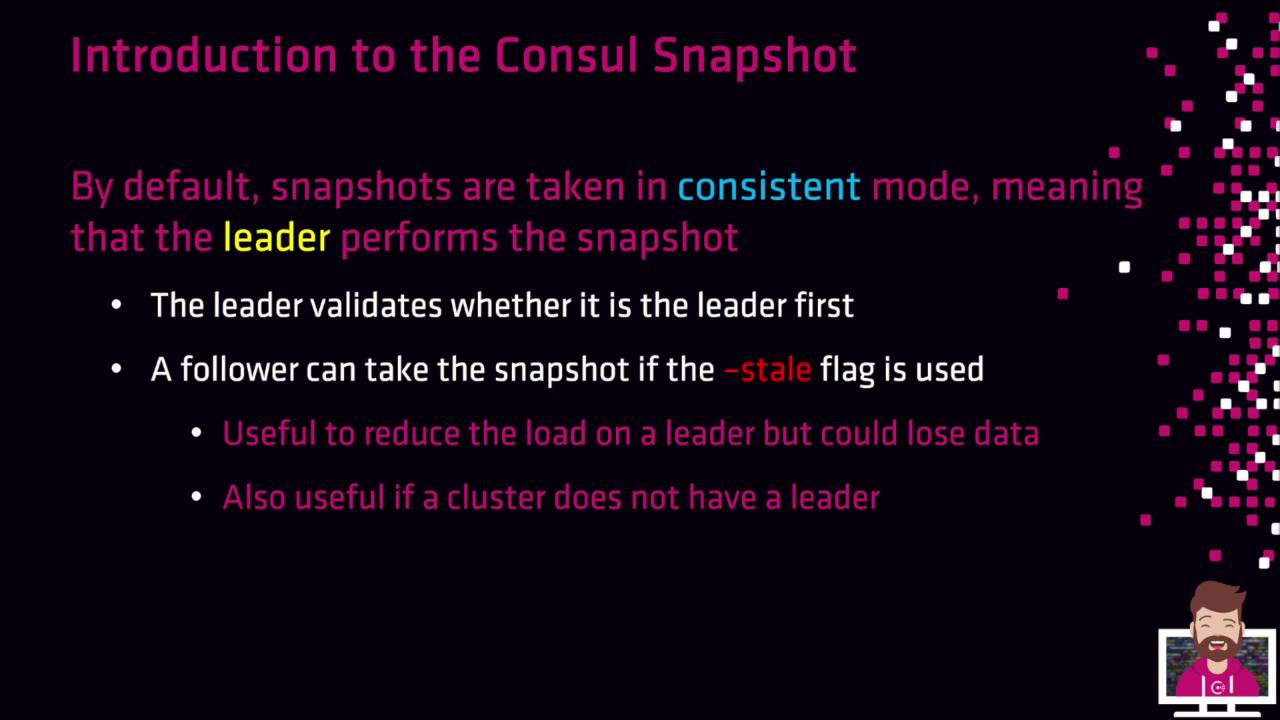HashiCorp Certified: Consul Associate Certification
Back up and Restore
Introduction to Consul Snapshots
Consul snapshots provide an atomic, point-in-time backup of your cluster’s Raft state. They are the primary mechanism for disaster recovery (DR) and allow you to restore:
- Key-value entries in the KV store
- Service catalog definitions
- Prepared queries
- Active sessions
- Access Control Lists (ACLs)
- Internal metadata
Consistent snapshots ensure that all committed log entries across the Raft quorum are captured by the leader before the archive is created.
Note
By default, snapshots run in consistent mode. The cluster leader coordinates the process to guarantee data integrity.

Taking a Snapshot on the Leader
Run the following command on the current leader to save a consistent snapshot:
consul snapshot save /path/to/consul-snapshot.gz
This will:
- Verify leader status.
- Generate a gzipped tar archive at the specified path.
Offloading to a Follower with -stale
If you need to reduce load on the leader—or capture state when quorum is lost—you can offload snapshot creation to a follower:
consul snapshot save -stale /path/to/consul-snapshot.gz
Warning
Using -stale may omit unreplicated log entries from the follower, potentially resulting in data loss. Only use this option when leader performance or cluster availability is impacted.
When to Use Stale Snapshots
- Offload resource-intensive backup tasks from the leader
- Capture cluster state after quorum loss, to restore in a new cluster
Snapshot Contents
| Component | Description |
|---|---|
| KV Store Entries | All key-value data |
| Service Catalog | Registered services and metadata |
| Prepared Queries | User-defined queries saved for repeatable lookups |
| Active Sessions | Locks and leader election sessions |
| ACLs | Access Control policies and tokens |
| Internal Metadata | Raft indexes, configuration, and other system details |
References
Watch Video
Watch video content